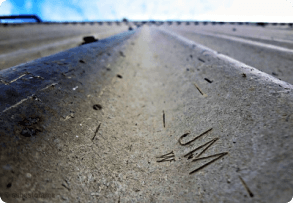Johns-Manville Asbestos Lawsuit: A Legacy Of Betrayal
The name Johns-Manville resonates with a profound and tragic history, inextricably linked to one of the most significant corporate liability cases in American history: the Johns-Manville asbestos lawsuit. This saga is not merely a historical footnote; it is a stark reminder of the devastating consequences of corporate negligence and the enduring human cost of asbestos exposure. The repercussions of Johns-Manville’s asbestos history are still felt today, more than 160 years from its start, impacting countless lives and shaping legal precedents for generations.
For decades, Johns-Manville was a titan in the construction and manufacturing industries, producing a vast array of products containing asbestos, a naturally occurring mineral once lauded for its heat resistance and insulating properties. What was not widely known, or was actively concealed, was the deadly secret harbored within these materials: asbestos fibers, when inhaled, could lead to debilitating and often fatal diseases, including asbestosis, lung cancer, and mesothelioma. This article delves into the intricate history of the Johns-Manville asbestos lawsuit, exploring the company's rise, its knowledge of asbestos dangers, the monumental legal battles it faced, and the establishment of the Manville Personal Injury Settlement Trust, a unique mechanism designed to provide compensation to victims.
Table of Contents
- The Dawn of an Industrial Giant and a Hidden Danger
- The Unveiling of Truth: Corporate Knowledge and Concealment
- The Tidal Wave of Litigation: Before Chapter 11
- The Chapter 11 Filing: A Strategic Retreat
- The Manville Personal Injury Settlement Trust: A New Paradigm
- The Enduring Human Cost of Asbestos Exposure
- Johns-Manville Today: A Transformed Entity
- Lessons Learned and the Path Forward
- Conclusion
The Dawn of an Industrial Giant and a Hidden Danger
Johns-Manville's journey began in the mid-19th century, evolving into a leading manufacturer of insulation, roofing, and other building materials. For decades, asbestos was a cornerstone of their product line, prized for its fire-retardant and insulating properties. From pipes to floor tiles, asbestos was ubiquitous in construction, and Johns-Manville was at the forefront of its production and distribution. The company's expansion was rapid, and its products were used in homes, schools, factories, and military installations across the globe.
Early History and Asbestos Integration
The company's reliance on asbestos grew throughout the early to mid-20th century. Even as scientific understanding of the material's potential harm began to emerge, Johns-Manville continued its extensive use. It wasn't until 1958 that Johns-Manville got into fiberglass insulation after buying Glass Fibers, Inc., but it continued using asbestos in a significant portion of its product offerings. This dual approach meant that even as alternatives became available, the company maintained its commitment to asbestos, ensuring a continued stream of exposure for workers and consumers alike.
The Inception of Awareness: Early Johns-Manville Asbestos Lawsuit Precursors
While the widespread public outcry and legal actions came much later, the seeds of the Johns-Manville asbestos lawsuit were sown surprisingly early. As early as 1929, the company began facing lawsuits and claims. These initial cases, though few in number compared to the deluge that would follow, represented the first tremors of a looming earthquake. They were early warnings, signals from the medical and legal communities that something was gravely wrong with the material that formed the backbone of Johns-Manville's empire. These early claims, often filed by workers who had developed severe respiratory illnesses, were often settled quietly, preventing public scrutiny and the broader dissemination of information about asbestos's dangers.
The Unveiling of Truth: Corporate Knowledge and Concealment
One of the most damning aspects of the Johns-Manville asbestos lawsuit saga is the revelation that the company was aware of the dangers of asbestos exposure decades before the information became public knowledge. This wasn't a case of ignorance; it was a deliberate choice to prioritize profit over public health, a decision that would ultimately lead to a catastrophic human toll and an unprecedented legal crisis.
Internal Revelations: What Johns-Manville Knew
Internal documents and testimony from lawsuits show that Johns-Manville knew about the dangers of asbestos as early as the 1930s. This was not merely anecdotal evidence; it was documented in company memos, medical reports commissioned by the company, and even in discussions among senior executives. These documents painted a grim picture: the company's own medical advisors and industrial hygienists had identified a clear link between asbestos exposure and debilitating lung diseases. Court documents state that the employees who worked directly with asbestos were at severe risk, and the company was privy to this information. For instance, early medical studies and internal reports detailed cases of asbestosis among workers, yet these findings were largely suppressed.
The Policy of Silence: Suppressing Vital Information
Perhaps the most egregious aspect of Johns-Manville's conduct was its deliberate policy of concealment. It was company policy to keep this information from its workers, the public, and even its own sales force. Warnings were not issued, safety measures were not adequately implemented, and the hazardous nature of their products was downplayed or outright denied. This policy of silence had devastating consequences, as millions of individuals continued to work with, live near, and use asbestos-containing products, completely unaware of the invisible killer lurking within. This corporate strategy of suppression forms a central pillar of the arguments made against Johns-Manville in the subsequent lawsuits, highlighting a profound ethical breach.
The Tidal Wave of Litigation: Before Chapter 11
Despite Johns-Manville's efforts to suppress information, the truth about asbestos's dangers eventually began to surface, largely due to the tireless efforts of victims, their families, and pioneering attorneys. As medical science advanced and more cases of asbestos-related diseases emerged, the trickle of early lawsuits transformed into a flood. This growing tide of litigation would ultimately push the company to the brink.
Mounting Pressure: The Unprecedented Number of Lawsuits
By the late 1970s and early 1980s, the number of individuals diagnosed with asbestos-related illnesses skyrocketed. These diagnoses often came decades after initial exposure, a cruel latency period that meant victims were often elderly and their illnesses advanced. By 1982, an unprecedented number of lawsuits had been filed against Johns-Manville. The company, once an industrial powerhouse, found itself besieged by legal claims from former employees, their families, and even consumers who had used its products. Each lawsuit represented a life irrevocably altered, a family shattered by a preventable disease. The sheer volume of these claims, coupled with the increasing legal costs and potential liabilities, created an unsustainable financial burden for the company, setting the stage for a drastic and historic decision.
The Chapter 11 Filing: A Strategic Retreat
Facing an insurmountable wave of litigation and the prospect of endless future claims, Johns-Manville made a controversial and groundbreaking decision that would send shockwaves through the legal and corporate worlds. This move, while financially strategic for the company, was met with outrage by victims and their advocates.
1982: A Pivotal Year for Johns-Manville
In 1982, Johns-Manville filed for Chapter 11 bankruptcy protection. This was not a typical bankruptcy filing; it was a strategic maneuver designed specifically to manage and contain the overwhelming asbestos liability. The company officially filed for Chapter 11, citing the "unprecedented" number of lawsuits and the impossibility of quantifying future claims. At the time of the filing, Johns-Manville faced an estimated 16,000 lawsuits, with projections suggesting hundreds of thousands more could follow. The company argued that without bankruptcy protection, it would be forced into liquidation, leaving no assets to compensate future victims. This decision, while controversial, effectively halted all existing Johns-Manville asbestos lawsuit proceedings and paved the way for a new, centralized system of compensation.
The Manville Personal Injury Settlement Trust: A New Paradigm
The Chapter 11 filing, while halting immediate litigation, did not absolve Johns-Manville of its responsibility. Instead, it led to the creation of a unique and groundbreaking mechanism for victim compensation: the Manville Personal Injury Settlement Trust. This trust became the primary avenue for individuals seeking redress for asbestos-related injuries stemming from Johns-Manville products.
Establishing the Trust: A Response to Crisis
The Manville Trust was established in 1988 to resolve all further asbestos personal injury claims resulting from exposure to asbestos and asbestos-containing products mined or manufactured by Johns-Manville. Its creation was the result of years of complex negotiations between Johns-Manville, asbestos victims' representatives, and the bankruptcy court. The trust was funded by a significant portion of Johns-Manville's equity, a substantial cash contribution, and a percentage of the company's future profits. In lieu of a Johns-Manville asbestos lawsuit against the company directly, the Manville Personal Injury Settlement Trust provides compensation to individuals exposed to Johns-Manville asbestos products. This innovative approach aimed to ensure that current and future victims would receive compensation without bankrupting the company outright, allowing it to continue operating and generating funds for the trust.
How the Manville Trust Operates: Claims and Compensation
The Manville Trust operates as a quasi-judicial body, reviewing claims and distributing compensation based on established criteria. Over 600,000 claims have been filed against the Manville Trust since its inception, making it one of the largest and longest-running asbestos trusts in the world. The trust categorizes claims based on the severity of the illness, from non-malignant conditions like asbestosis to fatal diseases like mesothelioma. Each category has a predetermined value, and payments are made on a pro-rata basis, meaning that if the trust's funds are insufficient to pay all claims in full, payments are reduced proportionally. This ensures that the trust can continue to operate and compensate victims for many years to come.
Navigating the Trust: Claim Types and Filing Guidance
For individuals affected by Johns-Manville asbestos exposure, understanding the Manville Trust is crucial. The trust provides detailed information on how to file a claim, the documentation required, and the various claim types it recognizes. Claimants typically need to provide medical documentation confirming an asbestos-related diagnosis and evidence of exposure to Johns-Manville products. While the process can be complex, the trust's guidelines are designed to be as accessible as possible. Individuals are encouraged to explore claim types, payment amounts, and how to file your claim directly through the trust's official channels or with the assistance of an experienced asbestos attorney. The trust continues to be a vital resource for those seeking justice and compensation for the harm caused by Johns-Manville's legacy.
The Enduring Human Cost of Asbestos Exposure
Beyond the legal and financial complexities, the true tragedy of the Johns-Manville asbestos lawsuit lies in the profound human suffering it represents. The statistics, while staggering, only begin to tell the story of the individual lives shattered by asbestos-related diseases.
Thousands of Cases: The Health Fallout
Asbestos exposure resulted in thousands of cases of debilitating illnesses and premature deaths. Mesothelioma, a rare and aggressive cancer that attacks the lining of the lungs, abdomen, or heart, is almost exclusively caused by asbestos exposure. Asbestosis, a chronic lung disease, causes severe shortness of breath and can lead to respiratory failure. Lung cancer rates are also significantly higher among those exposed to asbestos. These diseases often have long latency periods, meaning symptoms may not appear for 20, 30, or even 50 years after initial exposure. This delayed onset makes diagnosis challenging and often means that by the time symptoms manifest, the disease is already advanced and difficult to treat. The human cost continues to mount, even decades after Johns-Manville ceased its asbestos operations, as new diagnoses emerge from past exposures.
Johns-Manville Today: A Transformed Entity
Remarkably, Johns-Manville survived its bankruptcy and emerged as a restructured company. It is now a subsidiary of Berkshire Hathaway, Warren Buffett's conglomerate. The company no longer produces asbestos-containing products and has shifted its focus entirely to other building materials, insulation, and roofing products. Its current operations are entirely separate from the historical asbestos liabilities, which are managed solely by the Manville Trust. This transformation highlights the unique outcome of the Johns-Manville asbestos lawsuit: a company was able to shed its catastrophic past liabilities while a dedicated trust was established to ensure ongoing compensation for victims.
Lessons Learned and the Path Forward
The Johns-Manville asbestos lawsuit stands as a monumental case study in corporate responsibility, product liability, and the long-term consequences of prioritizing profit over safety. It underscored the critical importance of transparency, ethical conduct, and stringent regulatory oversight in industries dealing with potentially hazardous materials. The case also set a precedent for how mass tort litigation involving future claims could be managed through bankruptcy and the creation of trusts, influencing subsequent asbestos-related bankruptcies and trust formations across various industries.
For victims and their families, the Manville Trust offers a pathway to justice and financial relief, albeit often after years of suffering. The ongoing operation of the trust serves as a constant reminder of the company's past actions and the enduring impact of asbestos exposure. The legal and medical communities continue to learn from this case, advocating for stronger worker protections, stricter environmental regulations, and comprehensive support for those affected by legacy toxins.
Conclusion
The Johns-Manville asbestos lawsuit represents a pivotal moment in legal and corporate history, a saga that began with industrial innovation and tragically culminated in widespread illness and a landmark bankruptcy. The consequences of Johns-Manville's asbestos history are still felt today, more than 160 years from its start, as the Manville Personal Injury Settlement Trust continues its vital work of compensating victims. This complex narrative serves as a powerful cautionary tale about the devastating impact of corporate negligence and the importance of accountability.
If you or a loved one has been affected by asbestos exposure, particularly from Johns-Manville products, understanding the Manville Trust and how to file a claim is crucial. We encourage you to seek legal counsel from an attorney specializing in asbestos litigation to explore your options and ensure your rights are protected. Your experience and insights are valuable to this ongoing conversation. Feel free to share your thoughts or questions in the comments below, or explore other related articles on our site for more information on asbestos awareness and victim support.

Johns Manville | Asbestos Use, Lawsuit and Trust Fund

Johns Manville & Asbestos: Products, Asbestos Trust & Lawsuits

Johns Manville & Asbestos: Products, Asbestos Trust & Lawsuits